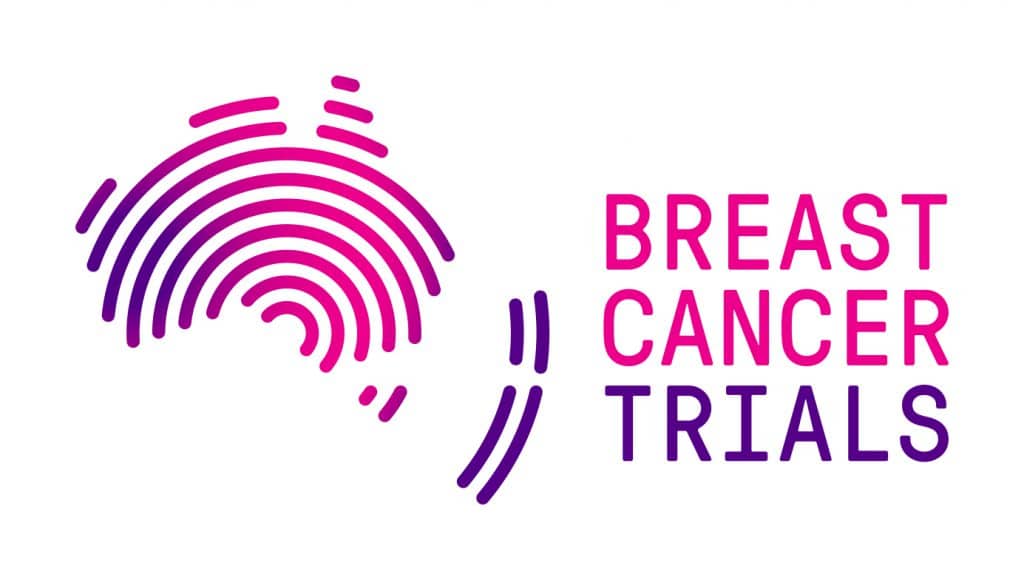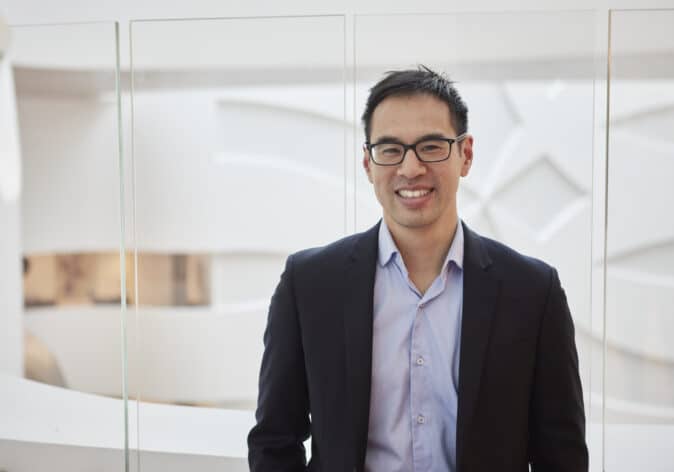The Need for a Clinical Trials Group in the Late 1970’s
“At the time, all sorts of people had individual ideas about how to treat a patient with cancer, but there wasn’t a lot of evidence about which was a better way to go. An individual experience of two or three cases often changed a treating doctor’s opinion.”
“That’s not scientific, and the trouble is that you get different answers for different smaller experiences. The way to get around that is to do proper, clinical trials, which compare policies that are, that give you an answer, as to how you apply them next.”
“And so, by the time I got back from training overseas in the late 1970s, there were quite a number of people who had experience of doing clinical trials, in various parts of the world. UK, United States, particularly, and we’re setting up to do them here. The breast cancer group was the first organized group to do trials in any particular cancer in this country, with a possible exception of the pediatricians who’d done a few things in childhood leukemia, a few years earlier.”
Listen to the Podcast
Listen to our conversation with Professor Alan Coates AM as he discusses the ANZ-8101 and BIG 1-98 clinical trials, which were practice changing research and still have relevance today.
The Introduction of ANZ-8101
“You know, ANZ-8101 was an important trial. It was a successful trial that the group ran, but it wasn’t the first trial the group ran. And to put it into context, our first generation of trials compared policies in treating women with metastatic breast cancer.”
“Should they start with a hormone treatment? Should they start straight into chemotherapy? Or is it better to use both together? And we’ve got a clear answer from that first generation of trials, ANZ-7802 and ANZ-7801, that starting with endocrine treatment was just as good and put off the day when you had to give what was then very unpleasant chemotherapy.
“ANZ-8101 was a separate trial for the woman who had already required chemotherapy and was asking questions, again, trying to make life easier for women because in those days, the side effects of chemotherapy were even worse than they are now.”
“We didn’t have the ability to control, particularly nausea and vomiting, which was a major problem with all of the drugs we used and particularly some of the newer ones we were beginning to use in the 1980s.”
“So, ANZ-8101 compared different policies of using chemotherapy, and then asked questions about ‘can you give the patient a bit of a break and then go back to treatment only when you need to.’ That was a great idea. It sounded good. It worked in lymphomas and other types of cancer. It didn’t work in breast cancer, but we needed a trial to find that out, and the trial asked the question, do we start and keep going, or do we start and then give three cycles, stop and wait, and only treat if we need to.”
“The bottom line was that both from the control of the tumour, response of the treatment, how long the patient lived, and also from the point of view of the patient’s own symptoms, it was better to keep going. And the reason we know that is that this is the first trial in which patients gave their own assessment of outcomes.”
“That is what we now call patient reported outcomes or quality of life measures, which were incorporated into ANZ-8101 for the first time in ancient clinical trials in Australia. We used techniques that had been developed, particularly in the UK and by a visiting scientist from Canada who was on sabbatical, in Sydney.”
“But we used things that were simple and could be applied to hundreds of women in busy clinics and get a real measure of what those women thought about the quality of life during treatment, and the answer was very clear that in this particular comparison, the quality of life of patients who continued treatment, continued to improve. Whereas when we stopped treatment, tried to give the patient a break, quality of life deteriorated.
“And so, the idea of giving a treatment holiday in breast cancer didn’t work. And we had not only the objective measures of response rates and indeed eventually survival, but also the patient’s views of what made them feel better. And that was, of course, critically important because it was with their wellbeing in mind that the whole trial was designed.”
Improving Chemotherapy and Existing Treatments
“We needed to make the best use of the available chemotherapies, and in those days, there weren’t a lot of drugs available to choose from. One of the newer drugs was a drug called Doxorubicin or Adriamycin, and it was touted as a real improvement.”
“In fact, we used it and we used the older combination of three drugs with some cortisone drugs as well, and we compared those, one or the other, in the trial as well as the policy of stopping or continuing. It turned out that the distinction between the two types of chemotherapy wasn’t important, but the distinction of keeping going was important in terms of patient outcomes.”
The Development of the BIG 1-98 Clinical Trial
“Okay, so in BIG 1-98, we are moving in two important different ways. One, we’re talking about patients with early breast cancer that it has not yet come back. And two, because we need very large, much larger numbers to get answers in this group, we had to offer an international collaboration.”
“All of these treatments are in the endocrine treatment phase, the hormone type treatments. The mainstay that the established drug was a drug called Tamoxifen, which is undoubtedly the best drug I saw in all the years I was practicing. It made a fundamental difference to women with breast cancer.”
“A new class of drugs had come along, which was also designed to reduce the impact of endocrine treatment and endocrine agents on the tumour. That is, some tumours, most of them the tumour is driven to some extent by, estrogen in the woman’s body.”
“If you can turn that off with aromatase inhibitors or block its action with Tamoxifen, then many of the tumours will respond, and the use of those same drugs early after surgery for breast cancer, it was hoped, was going to reduce the chances of the tumour coming back, and in fact both of those work.”
“When we were starting BIG 1-98, we were trying to work out where the new drugs fitted into the sequence, and whether they should be used upfront or only if an older treatment such as Tamoxifen had failed.”
“We took a trial design that has been started by a drug company as a two-arm study comparing Tamoxifen with an aromatase inhibitor, and we designed it instead to answer academically important questions, including the sequence of starting with one and switching to the other, or starting with one and keeping it going for the whole of the treatment, which was a five-year treatment in those days.”
“So BIG 1-98 had four arms by the time we were running it and that was continuous aromatase inhibitor, a drug called Letrozole, continuous Tamoxifen, we’ll start with Tamoxifen and switch after two to three years to Letrozole or start with Letrozole and switch to Tamoxifen.”
“All of those arm’s work. They all reduce the chance of the tumour coming back on average across all patients. The arms that included Letrozole did slightly better, but what we found out by the analysis of all the patients taking part was that that benefit didn’t apply uniformly to all women.”
“Women at average or less risk did just as well with Tamoxifen alone. The sequence of starting with Tamoxifen and switching, which was being used in another trial at the same time, in the UK, was as good for most patients, except for the very high-risk ones where it was better to start with the newer drug.”
“So, for many of the patients, the sequences either way round were just as good as starting entirely with the new drug. That’s important because if a woman finds that the side effects of one or other of these drugs is unacceptable and intolerable, then this trial gives you solid evidence that it’s safe to switch to the other sort. And the women, they prefer that. So that’s a piece of knowledge that is valuable in the clinic for people who can’t tolerate one or other of the drugs.”
BCT’s Involvement In Other More Recent Major Breakthroughs
“I think the next important group was to look at the premenopausal adjuvant studies. This is the group of studies called SOFT and TEXT, that Prue Francis has led for our group. And that’s asking the same sort of questions about the treatment of women before the menopause. Tamoxifen again was the mainstay of treatment. Is it better to use one of these new drugs?”
“The problem is that you can’t just give a premenopausal woman Letrozole. It would be swamped by the estrogen that her body makes. And so, as part of that treatment, you have to turn off estrogen production with another sort of drug.”
So, there’s an LHRH agonist drug that’s used triptorelin or gooseling, which turns off the body’s ability to make estrogen. And then you can use a drug like letrozole. Stopping the estrogen production in and of itself was another possibility. So, some of the arms that were used in these studies were Tamoxifen alone, Tamoxifen plus the blocker, or the blocker making it possible to use Letrozole.”
“And again, it depends on the degree of risk, and Dr Francis will tell you more about the details of this, but it seems to me the complicated treatments, the ones that involve stopping estrogen production and then using, a drug like Letrozole are beneficial, but they’re beneficial, particularly for women at higher risk. Whereas for women at low risk, a simple treatment like Tamoxifen might be quite adequate.”
Looking Towards the Future of Breast Cancer Research
“The game is changing. When we did trials like BIG 1-98, or ANZ-8101, almost all the patients who came to your clinic would be eligible for that question because it, as far as we knew, the question applied to all of them. Nowadays we are finding out so much more about the subgroups within breast cancer, that the group of patients for whom any treatment question applies is smaller and smaller.”
“So, it’s getting harder to find questions that have enough patients to be answered reliably. And that’s requiring a great deal of collaboration internationally to get the numbers required for the statistics to work, on groups of patients that are increasingly defined by molecular subtypes that we now understand in breast cancer.”
“I think that the clinical research gives us reliable information so we can advise patients not on the basis of whim and personal experience, but on solid science. And that’s what the last 50-years of clinical trials have contributed to the wellbeing of the next woman who comes through the door.”
Support Us
Help us to change lives through breast cancer clinical trials research



